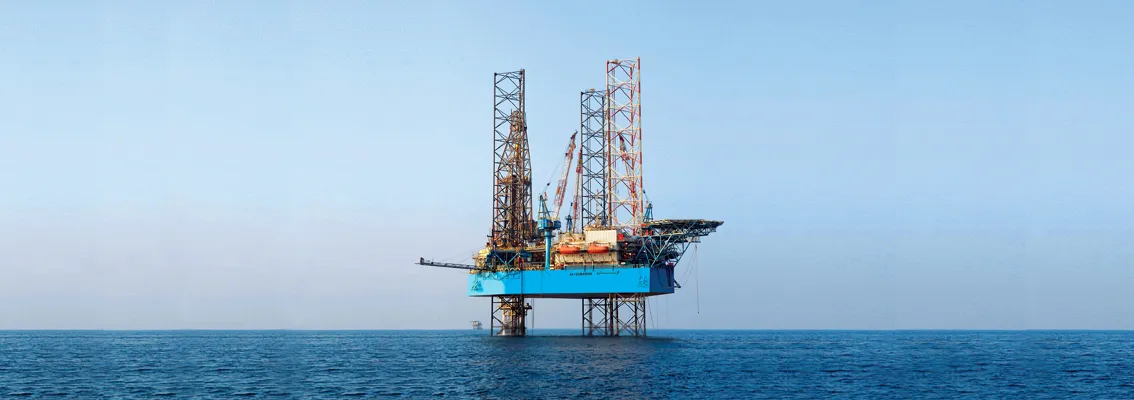Determining whether a jack-up is suitable for operating safely at a proposed location is crucial; however, such assessments form only part of the risk profile. The transition stages of installation at, and removal from, a location are just as important as the safe operation of the unit once installed. Mike Hoyle from DNV’s Noble Denton marine services team outlines the work being undertaken to provide the oil and gas industry with knowledge and best practice guidance on site-specific jack-up assessments.
Published: 7 December 2015
Jack-ups are typically designed for a combination of water depth, leg penetration, airgap and wind and wave conditions, and it is these that indicate the ability of the unit to operate at a location. When selecting which jack-up design to employ, the capability of the unit is checked against site-specific conditions, including often challenging soil profiles, all of which can vary from the jack-up’s initial design assumptions.
Such assessments are intended to establish the suitability of a jack-up for operations at the proposed site and, if the unit satisfies assessment requirements, provides the basis for the jack-up owner to obtain a Certificate of Approval to comply with insurance requirements.
Industry standards such as SNAME T&RB 5-5A and ISO-19905-01 are used to assess the ability of a jack-up to withstand extreme storm loading; however, there can be equal if not greater challenges when moving a jack-up off location, says Mike Hoyle, head of advanced engineering at DNV - Oil & Gas.
“The dynamic nature of jack-up platforms means that, although there is a growing body of literature for offshore structures, there are several areas of behaviour relating to jack-up platforms which are not well understood.”
The work undertaken by the ISO Work Group (WG) for site-specific assessment of mobile units will prove crucial in this respect, believes Mike. Set up in 1996, as a follow-on to a joint industry project established by DNV that developed the first widely accepted industry standard (SNAME T&RB 5-5a) for site assessments, the WG initially established the ISO 19905-1 and 2 standards, based on the SNAME guidance. However, there is still more to be done.
“Moving on, and especially off, location are areas that are not covered well by the industry standards that currently exist,” explains Mike. “They are the highest risk element of the installation lifecycle, and because of this risk and potentially conservative operational limits, jack-ups can spend more time on location than they need to.” The WG has started to address this topic in its project to develop ISO 19905-4.
Pushing boundaries
In addition, jack-ups are being employed in, or adapted to, locations for which they may previously not have been considered suitable, or in places from which operators have previously steered away due to ‘difficult’ conditions. This is a result of current economic challenges as well as the industry’s move into more challenging territories, says Mike. “It means site-specific assessments are even more critical,” he explains. “Rig owners are looking to push the margins and our role is to ensure that they are able to do so safely, and in compliance with industry standards.”
Many such projects require rapid turnaround, however Mike advises operators to begin the process as early as possible; ideally, a couple of months before a jack-up is due to be employed. “Early engagement enables us to provide guidance on jack-up optimization as well as suitability.”
However, it’s still important to think on your feet, says Mike. “Decisions are often made or changed closer to the time of deployment,” he explains. “For example, an oil company may choose to wait to see what equipment becomes available, or they will plan to use a certain jack-up rig, but then find the intended unit needs to be deployed somewhere else. We work with customers to facilitate their decision-making processes at such pressurized times and to ensure the solution is robust.”
“Just because a similar jack-up has previously operated at a similar location, it doesn’t mean that it will meet current standards even if it has been assessed previously” he adds. “We are able to draw on our extensive database of analytical models of most jack-up designs to accelerate the assessment process, and draw on expertise from our metocean department to check that any data provided is fit for purpose.”
“Reviews of the seabed and sub-seabed soil conditions, and of the infrastructure and debris can often make or break a project’s success”, he adds. “We are able to draw on our geotechnical and marine consulting teams to help customers to optimize their equipment at challenging locations; for example, by implementing technical solutions that can enable them to minimize preload or to optimize the time they spend pre-loading. Increasingly, this also includes advising on life extensions for older units, or problem-solving when a jack-up rig faces difficulties during deployment.”
Drawing on in-depth industry knowledge
The Noble Denton name is synonymous with marine warranty in the global oil and gas industry with more than a century of experience providing technical expertise to support challenging projects.
This expertise is supported by DNV’s JUSTAS software, which enables rapid, robust, consistent and cost-effective site-specific assessments of jack-up units in line with ISO or other relevant codes. DNV’s Noble Denton marine services team is also instrumental in developing and sharing industry knowledge, through joint industry projects and the ISO WG.
Better industry knowledge results in better planning and ultimately safer operations, emphasizes Mike. “We see our role not just as verifying or helping rig owners to verify that jack-ups are safe to employ, but also to support rig owners and to help them to optimize their assets,” he says. “We do more than simply ticking the box.”

